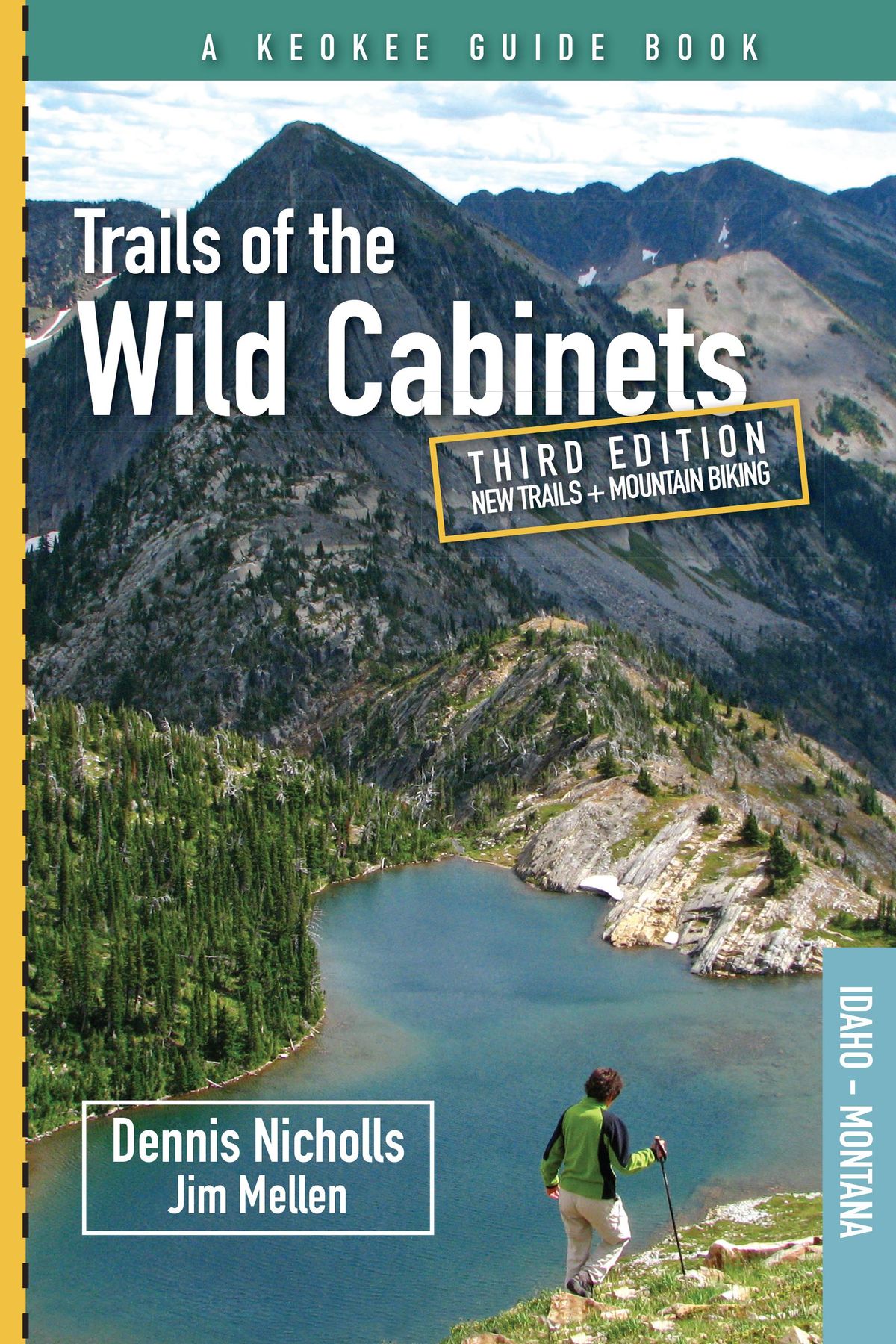Cabinet Mountains trail guide revised in new edition

A Sandpoint-area hiker devoted two years to revising a just released trail guidebook covering the Cabinet Mountains of western Montana and northern Idaho.
“Trails of the Wild Cabinets: Third Edition,” (Keokee Books), originally authored by Dennis Nicholls, has been re-researched and updated by Jim Mellen, who should be tested for traces of mountain goat DNA.
Mellen, his wife Sandii, and a core of leg-strong friends spend as much time in the region’s mountains as some critters.
The results include meaningful updates for more than 100 trails from a hiker who knows the lay of the land.
The book – and Mellen himself – serve as reminders to the U.S. Forest Service that all of these trails are important to the public, not just the most popular ones.
“The trail up Goat Mountain is not high on the Forest Service priority list,” he said, offering an example. The steep route to the mountain, which can be seen near Scotchman Peak from Lake Pend Oreille, would have been lost long ago if volunteers didn’t keep it open.
Before leading a grueling cross-country trek involving trails and bushwhacking across the proposed Scotchman Peaks Wilderness six years ago, Mellen didn’t want to finish on a bad note with an exhausted group.
“I previewed the Goat Mountain trail with my chainsaw, fuel, and oil and cut out 225 trees. That made the end of our trip a lot more pleasant. It’s satisfying to walk down a trail you’ve cleared and brushed out.”
He’s also satisfied to research and publish details that will similarly help people enjoy trails into the Cabinet Mountains that sweep 150 miles of goat, grizzly, moose, elk and trout country, including the Cabinet Mountains Wilderness.
“I’ve included GPS coordinates for the trailheads and added a few hikes to make sure there’s plenty of options for easy to difficult hikes,” he said.
He noted regulations changes for mountain biking on some trails. “It used to be that you could mountain bike the approach trails to the Cabinet Mountains Wilderness boundary,” he said. “But in some cases, you can’t even ride the approach trail.”
Each trail writeup includes whether the route is best-suited for hiking, horseback riding, mountain biking or a combination.
A chart indicates which trails have major points of interest such as lakes, waterfalls, old-growth forest, fire lookouts and peaks.
Many of the changes to the book owe to improvements, such as the rerouted trails to Start and Scotchman peaks, he said.
“It’s amazing how things change,” he added. “You could continuously rework maps and never have them completely up to date.”
The book details trails as listed by the Forest Service. Mellen adds notes to describe connections that hikers might use to reach desirable destinations.
“I tend to be one of those people who believes the fun begins when the trail ends,” he said.
The easiest trails in the book include the half-mile family hike into Grouse Creek Falls and he added the trail to Kootenai Falls with the footbridge over the river downstream from Libby.
North Fork Bull River Trail 47 is the most strenuous route in the book, in Mellen’s estimation. “About two-thirds of the way in the trail fades out and it’s a manway, bushwhacking and some rock up to Snowshoe Lake,” he said. “That’s a pretty good long, steep trip with backpacking gear.
“Some people get anxious on the rock, but I think it’s totally worth it. It’s also an access to climb Snowshoe Peak, which may be my favorite as Cabinet peaks go.”
Exploring the wild Cabinets had its share of tension and rewards for Mellen.
“When I took my wife up to Libby Lakes the first time she said she’d never do it again,” he said. “Two weeks later she got a bug to go up again and then a month later she went yet again to show it to a friend. It’s a lot of scrambling and bushwhacking.
“The picture she took of her friend is the one we used for the new book cover.”